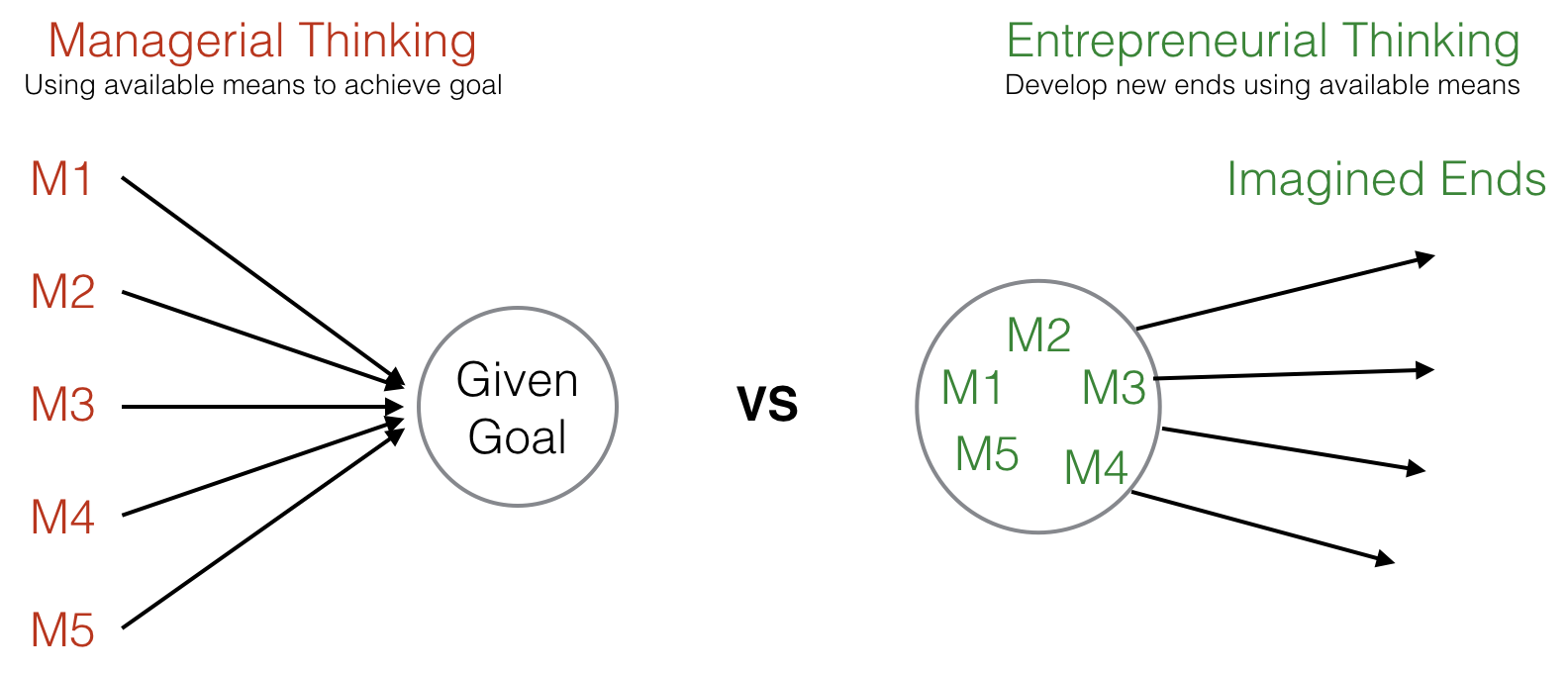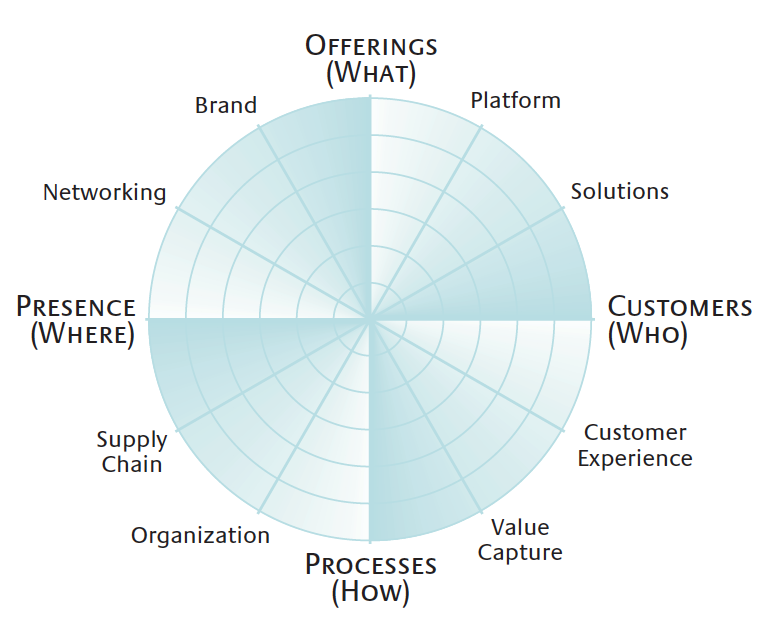 [Image Source](https://www.sprout.nl/artikel/startups/bamsterdam-maakt-droomplek-van-oud-ibm-pand)
[Image Source](https://www.sprout.nl/artikel/startups/bamsterdam-maakt-droomplek-van-oud-ibm-pand)
How can startup companies, especially technology startups, grow so fast that they could surpass the industry giants in a short period of time?
There are so many variables that could answer this complex question. It could be the team composition, the market readiness, industry size, strategy, the list goes on and on. One of the most important variables however, is the mindset of the entrepreneur themselves. Interestingly, there are contrasting differences of cognitive decisions and problem solving from entrepreneurs and managers. In 2001, Sarasvathy examines how experienced founders of one or more businesses solve typical problems in transforming an idea into a successful business. Sarasvathy then found an emerging pattern in which she calls Effectuation. However, effectuation is the exact opposite from what is being taught in MBA classrooms and most business schools at the time, Causation.
So, What is effectuation and causation, anyway?
Effectuation and causation are types of cognitive decision-making methods used by entrepreneurs and managers. While causation (managerial thinking) focuses on predetermined goals, using given means or available resources, effectuation (entrepreneurial thinking) imagines new ends (different possible outcomes) using available resources (given means). This could be an explanation on how entrepreneurs can tap on emerging opportunities during their entrepreneurial process through the interactions with key stakeholders. To be clear and concise, the below visuals display the key differences in managerial and entrepreneurial thinking.
Causation and effecuation different ends
Table I: Causation and effectuation key differences

The gap between effectual and causal thinking might explain how different mindsets are able to determine the future of the company. The contrasting difference in logic might be related to the aggressive startup expansion we have seen in recent years. It’s no secret that big companies are now adopting a much more entrepreneurial thinking to stay on top of the market. When faced with slow or stagnant growth and tough competition, many c-level views innovations are critical to company success. In fact, companies like Philips, Shell, Nike, and Unilever are amongst the top companies that continuously innovate to win the market in this global era. Even c-levels put high importance in company innovation. The concept of innovation is often confusing, and the question of it often revolves around how, what, when and why should a company innovate.
12 Different Ways Companies Can Innovate
A Sawhney, Wolcott and Arroniz article in 2006 presented the definition of business innovation, as well as 12 different ways companies can innovate. According to this article, business innovation is not only new things, but rather the creation of new value. Which means that innovation requires only adding value for the customers, not for the firm. Careful consideration of all business aspects is also critical in business innovation. Sawhney, Wolcott and Arroniz presented a 360 degree view in business innovation as displayed below:
Offerings
These are the core values that companies offer to customers, it could be products and services. Innovation in this dimension is the introduction of new products and services, which is valued by customers.
Platform
A platform is a bundle of similar components, assembled methods of technologies that serve as a constituent for a portfolio of products and services. You should carefully assess this dimension of business innovation as it is often overlooked even though considerably less value is added for customers here.
Solutions
A combination of products and services that solves your customer’s problems. Innovation in this dimension is to create value for customers by adding a product or service line and depth of integration for additional customer pain points.
Customers
Either individuals or organizations that utilise your product or service in order to solve their problems or to satisfy their needs. Business innovation for customers involve discovering new customer segments and identifying their unmet needs.
Customer Experience
It is the total sum of experiences that make up the interaction between customers and the company, from awareness until retention. As a company, you need to rethink how you deliver experiences through the interface, interaction and user experience to customers and find ways to innovate.
Value Capture
A mechanism that your company utilises to recapture the value. Companies can identify emerging potential revenue streams and new pricing schemes from interactions with customers and partners.
Processes
The chain of activity that is used to conduct internal operations. Greater efficiency, higher quality or increasing cycle time are things that a company should focus on in the process of innovation.
Organisation
Innovation in an organisation by which a company could restructure itself in a specific way, changing employees roles and responsibilities. When a company innovates in different dimensions, usually the roles and responsibilities of employees would change accordingly.
Supply Chain
Sequential, linear activities derived from raw materials or a source to deliver products and services. Companies can change the structure of its supply chain to enhance effectiveness and efficiency.
Presence
The place where your products or services take place and offers itself to your customers. You can innovate in this dimension by identifying emerging points of presence that could be valuable to your company, go to where your customers are.
Networking
The whole network that a company uses to deliver their products or services to customers is what networking is. Enhancement of networks that will increase the value of a company’s offerings is known as networking innovation.
Brand
Brands consist of the logo, symbol and visual enhancements used to communicate with your customers. Brand innovation involves two methods, leveraging existing brands to create a strong presence in your customer’s mind or to expand the product in distinguishable ways.








